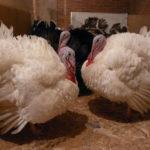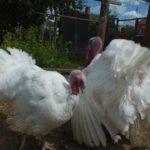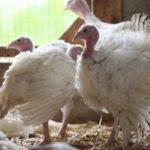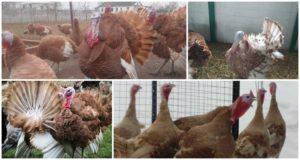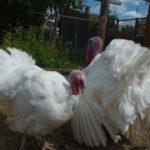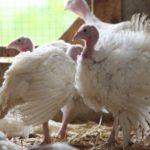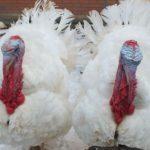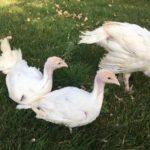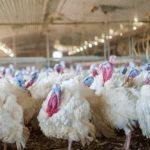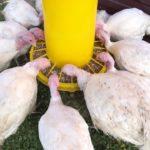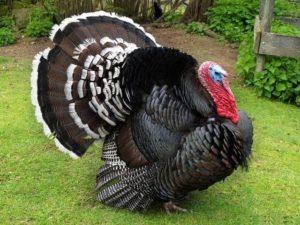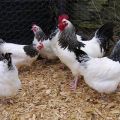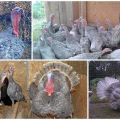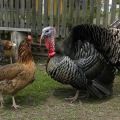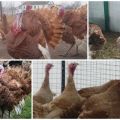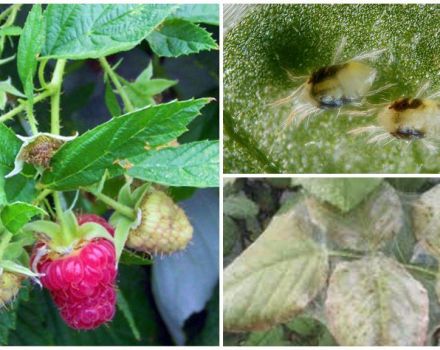Description and characteristics of heavy cross turkeys, their breeding
For meat, farmers are increasingly raising heavy cross turkeys. The bird species gains weight quickly. Products are appreciated for their taste and high quality. Keeping broilers in the household will be an economically viable option. But caring for a bird requires attention, knowledge of behavior patterns and adherence to the rules of care and feeding.
Productivity characteristics
Today, not only large breeders, but also owners of small farms, choose turkey crosses for meat production. The weight of poultry reaches 16 kilograms or more. Egg production rates are high - up to 150 pieces during the year.
Females begin to lay at 10 months of age. In a well-equipped, warm room, the process does not stop even in winter. The bird's hatching instinct is high. Birds do not even throw out other people's eggs. The best hens are 2 year old turkeys. Viable offspring, no more than a tenth of the young perish.
What is the difference from meat breeds
When working with crosses, you should understand how this type differs from the meat breed. The offspring of crosses do not inherit the qualities of their parents. Each time, the performance characteristics will decrease, and the behavioral responses will change. This is because hybrids are being crossed. The goal of breeders to improve such indicators:
- weight gain;
- increase in annual egg production;
- resistance to disease.
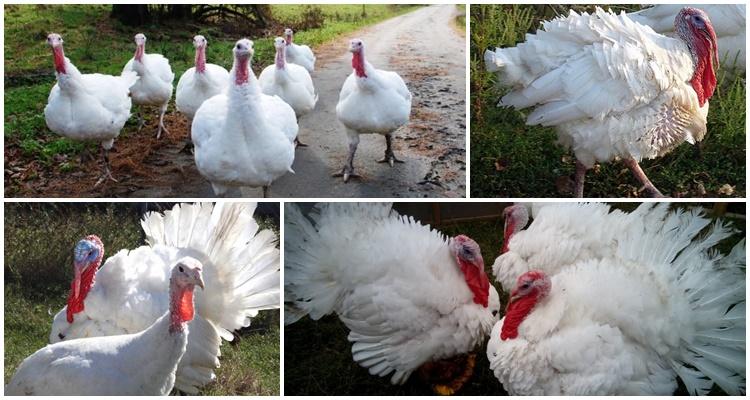
To obtain crosses, one branch is selected and representatives of several lines with hybrids are interconnected. Depending on the weight, the offspring are divided into light types, medium and the largest, heavy.
Definition of inbreeding
Crossbreeding of closely related domestic birds of the same breed is called inbreeding. At the same time, scientists set the task to consolidate the best characteristics of birds for further breeding. First, parents with high productivity are selected, then the young obtained as a result of the previous crossing. Periodically, the blood is refreshed by mating turkeys of other directions or males from a different livestock. This is done to prevent the line from degenerating.
Subject to the rules of feeding, creating comfortable conditions for keeping turkeys and culling individuals that do not meet the established indicators, inbreeding forms the necessary hereditary traits.
Popular representatives
Farmers raise different types of poultry.Each type has its own characteristics of content and performance indicators.
Grade maker
One of the popular types of heavy crosses of turkeys at 4 months of life already weighs 20 kilograms, females - about 11. The meat has good characteristics, the fat component is only 8%. Egg production rates are average - 100 pieces per year.
Cross takes root well in different climates, provided it is kept in a warm room. The building is kept at a temperature of about 28 ° C. For turkeys, it is recommended to equip spacious poultry houses. In tight quarters, heavy crosses do not get along well and often fight. For 1 adult male, no more than 8 females are acquired.
White broad-chested
The type was bred by American breeders in the middle of the last century. Heavy cross turkeys, depending on gender, weigh 25 kilograms (males) and 11 - females. Up to 120 eggs are brought in per season. Brooding hens are engaged in a common nest. The young are taken care of until the chicks become independent.
Wide-breasted white crosses have a calm disposition. Aggression is observed only during the mating season. It happens that hens even look after the offspring of other domestic birds. Turkeys love to walk outdoors. For them, keeping in a closed cell space is not suitable.
Hybrid converter
Such a cross of turkeys takes root well on small farms. The average weight of adult males is 20 kilograms, but there are cases when birds gained 30. They receive few eggs - up to 50 pieces.
Turkeys are distinguished by a calm disposition. Males rarely get into fights with their fellows. But other birds are not tolerated in the courtyard. At the site of representatives of the heavy cross, the converter is kept separately from other birds.
Criterias of choice
When choosing heavy crosses of turkeys, the main indicators of productivity, the quality of meat products and the cost of keeping birds are taken into account. For cultivation, farmers acquire young or adult females for incubation. It is better to buy turkey poults at the age of 1 month. Such chicks already eat normal food and are hardy. Therefore, babies will tolerate transportation well and quickly adapt in an unfamiliar place.
They also receive complete information about parents and vaccinations received.
When choosing eggs for further breeding, there are risks of loss. The survival rate is not always high. And it is impossible to estimate how healthy the offspring will be. The state of the young is immediately visible. A sick bird can even be recognized by its appearance.
Growing turkeys will be a profitable business if you follow the guidelines for keeping. Heavy crosses provide a high percentage of tasty, dietary meat. It is important to take into account the ability of birds to adapt to the weather conditions of the region where the farm is located, and the features of the selected type.


